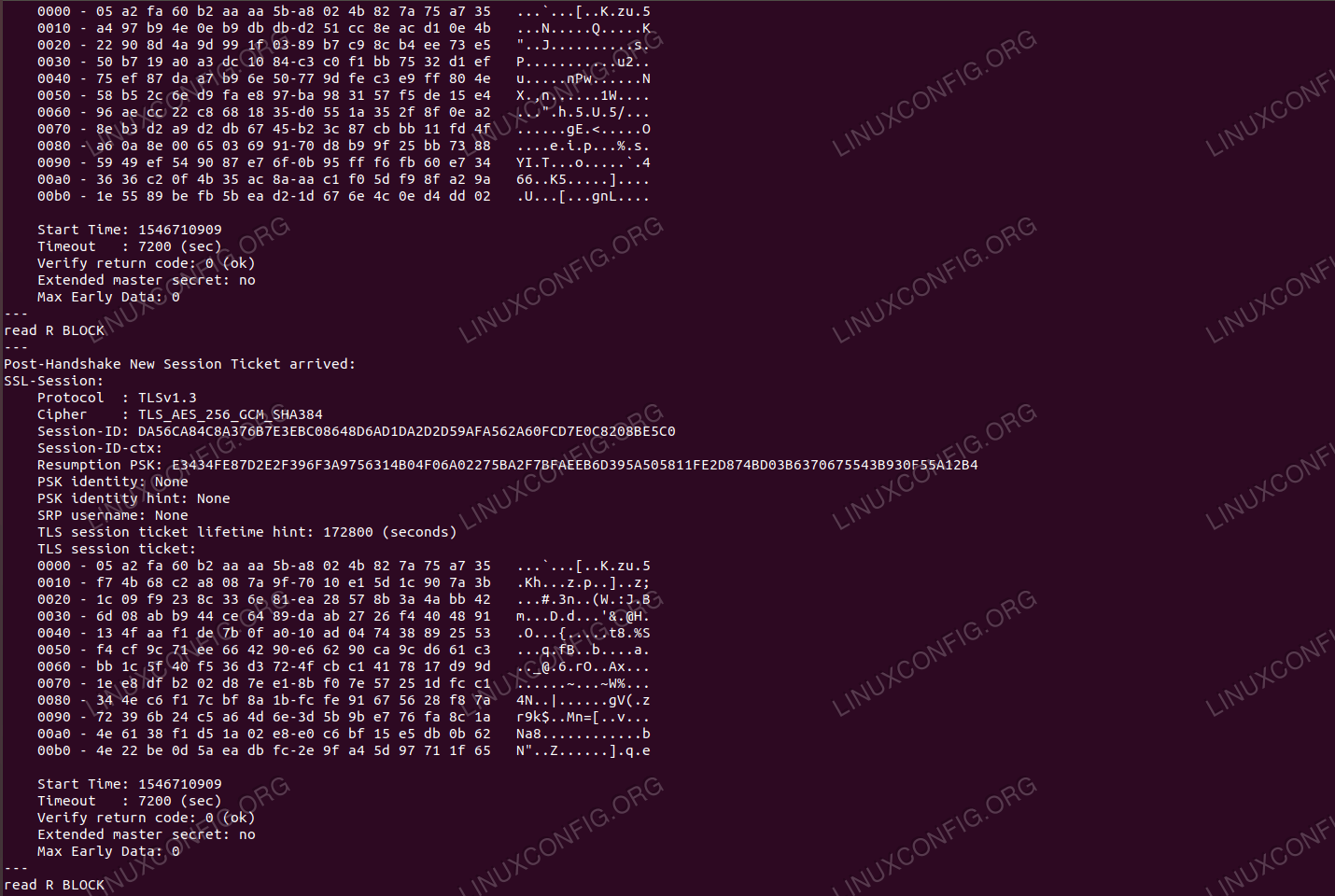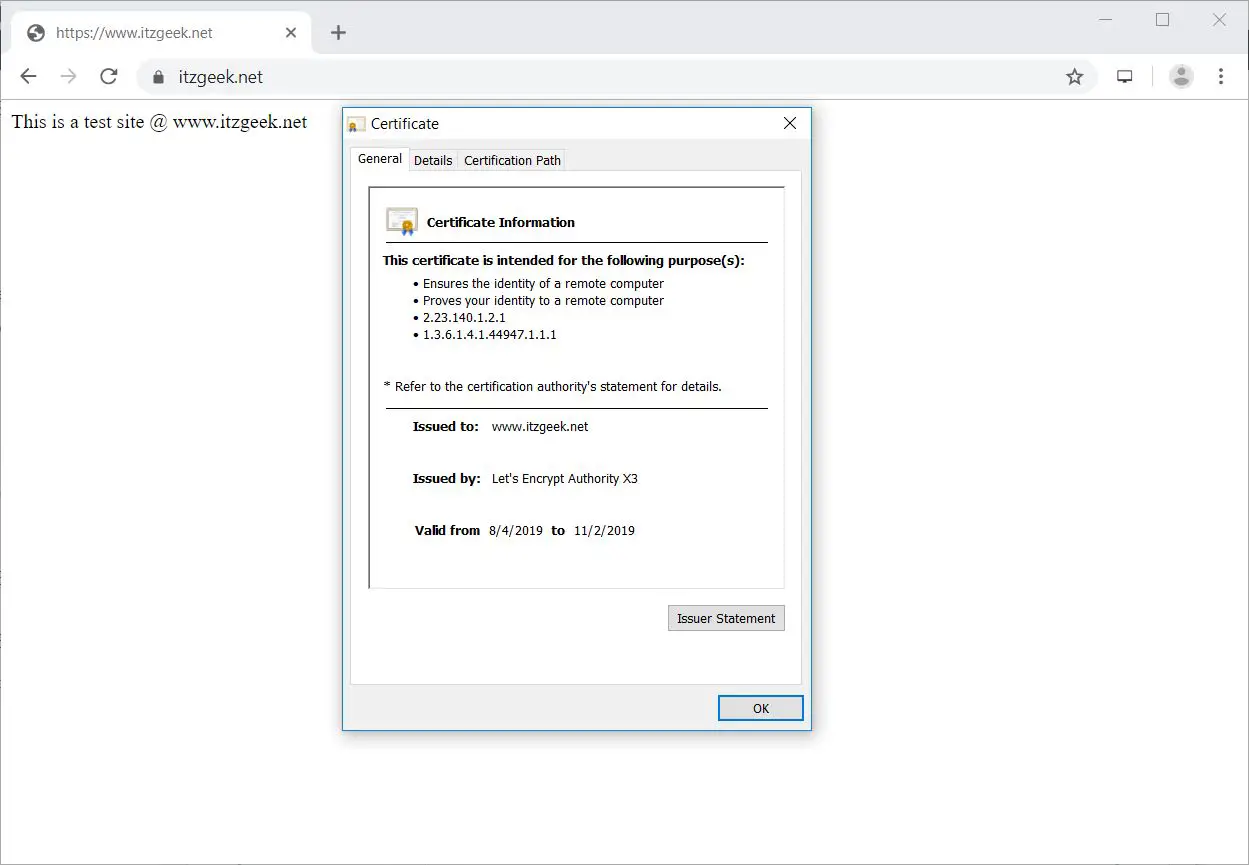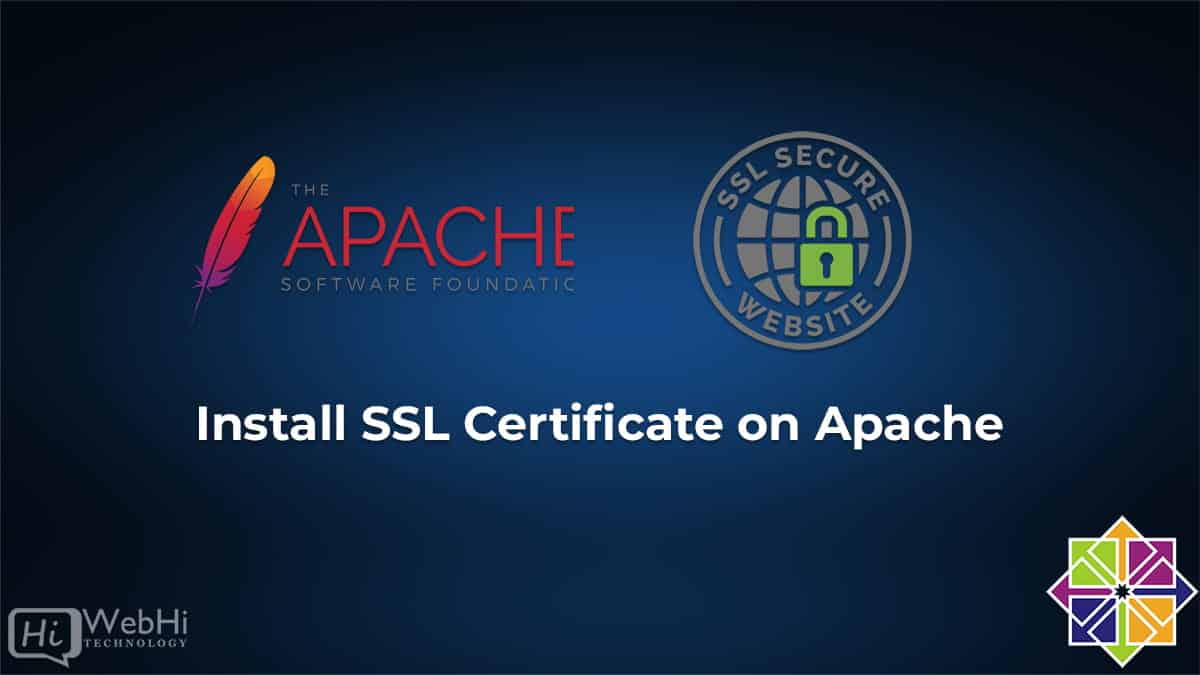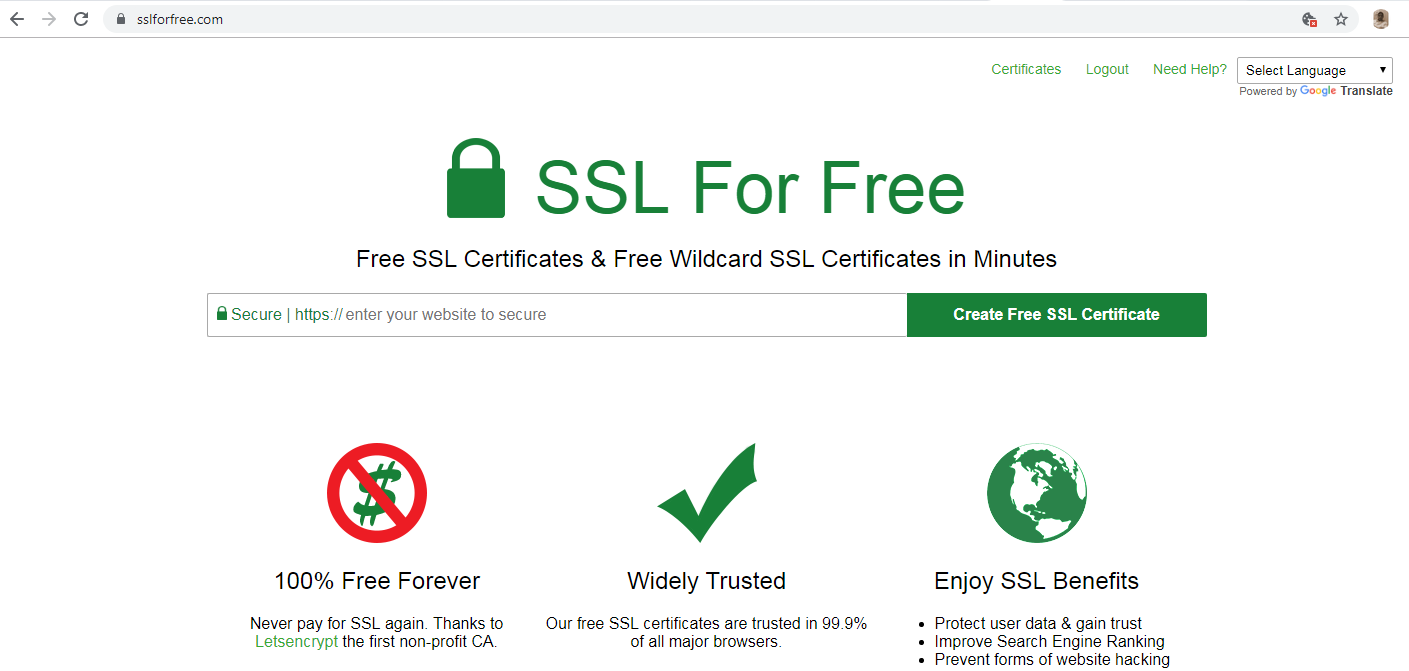
How to install ssl on RHEL 8 / CentOS 8 Linux Tutorials Learn Linux Configuration
1. Generate a CSR — Create a new Certificate Signing Request. 2. Purchase a Certificate — Send the CSR to GlobalSign and pay for the order. They then vet the info and provide a signed certificate. 3. Install the Certificate — We then install the SSL on the server. Typically, this falls under the Apache configuration.

Setup Let’s Encrypt SSL Certificate With Nginx on CentOS 8 / RHEL 8 & CentOS 7 / RHEL 7
How to install an SSL Certificate on CentOS? In this guide, you will learn how to install an SSL Certificate on CentOS. Since no SSL installation goes without a certificate.

Tutorial Free SSL Certificate Installation in CentOS 7 Red Hat Enterprise Linux RHEL eHVc08HVTwI
Generate CSR For generating CSR (Certificate Signing Request), you can either use a CSR generator or do it manually. To generate a CSR code on CentOS 7 manually, follow these steps: STEP-1: Open the terminal and run the following command: openssl req -new -newkey rsa:2048 -nodes -keyout your_domain_name.key -out your_domain_name.csr

How to Install and Configure SSL Certificate on Apache for RHEL/CentOS YouTube
SSL Certificate Sale: 50% Off at No-IP. Get 50% off No-IP's Rapid SSL Wildcard DV Certificate

How To Install SSL Certificate in Domains Using CentOS Web Panel TECH DHEE YouTube
Every bit helps. Join Patreon How to secure Apache with Let's Encrypt Certificates on CentOS 8 The procedure is as follows to obtaining an SSL certificate: Install SSL/TLS module for the Apache HTTP server in CentOS 8: sudo yum install mod_ssl Get acme.sh software, run git clone https://github.com/Neilpang/acme.sh.git

How to Install SSL Certificate in CentOS The Ultimate Guide YouTube
First, you need a web server. How to install Apache on CentOS 8 was discussed earlier. An SSL certificate is required too. We recently looked at how to set up Apache virtual hosts on CentOS 8. It may be useful to learn it before proceeding to installing an SSL certificate.

Setup SSL certificate in CentOS 7 using LetsEncrypt YouTube
Step 1 — Installing the Certbot Let's Encrypt Client To use Let's Encrypt to obtain an SSL certificate, you first need to install Certbot and mod_ssl, an Apache module that provides support for SSLv3 encryption. The certbot package is not available through the package manager by default.

Setup Let’s Encrypt SSL Certificate With Nginx on CentOS 8 / RHEL 8 & CentOS 7 / RHEL 7
To do so, run this command: cat pub-key.pem ca-chain.pem > full-chain.pem Go to your Apache server and keep the PEM file along with the SSL chain here: /etc/pki/tls/certs Go to this folder to keep the private key: /etc/pki/tls/private/ If you want your private key to be inaccessible to others, secure it using this command:

How To Install SSL Certificate on Apache for CentOS 7 Tutorial & Documentation
yum -y install httpd mod_ssl. sudo systemctl enable httpd.service. systemctl start httpd.service. 3. Set Up the Certificate. First copy your certificate file in /etc/ssl/private. mkdir -p /etc/ssl/private. chmod 700 /etc/ssl/private. The next thing to do is to set up the virtual hosts to display the new certificate.

How To Install SSL Certificate in RHEL/CentOS
This will either install OpenSSL or inform you that it's already present. 3. Make a directory to store the server key and certificate. # mkdir /etc/httpd/ssl. 4. Copy the SSL certificate file and server key to the new directory. 5. Edit the ssl.conf or httpd.conf file. Below is an example using the vi text processor.

Configure Nginx with SSL Certificate in Ubuntu and CentOS Digital Varys
1- Copy/paste the Certificate files into your server. Download your SSL Certificate file from your Provider, then paste them into your server's directory where you will maintain your certificate and key files. Make them possible to read uniquely by root. 2. Install Mod SSL To install mod_ssl you can check out our installation guide here. 3.

How to Install vsftpd FTP Server with SSL/TLS on CentOS 8
2. Next, install a module that supports SSL for Apache: sudo yum -y install mod_ssl . In this example, the latest version of the module is already available. 3. Now we can install certbot for Apache: sudo yum -y . install python-certbot-apache . 4. Once the installation is ongoing, you can start the process to get a certificate by entering

Install a free SSL Certificate on a Domain in Webuzo (using Let's Encrypt) Centos 7 YouTube
Step 1 — Installing the Certbot Let's Encrypt Client To use Let's Encrypt to obtain an SSL certificate, you first need to install Certbot and mod_ssl, an Apache module that provides support for SSL v3 encryption. The certbot package is not available through the package manager by default.

Tutorial Free SSL Certificate Installation in CentOS 7 / Red Hat Enterprise Linux (RHEL)
Certbot Installation 1. Use the command terminal to install the EPEL repository and yum-utils: sudo yum -y install epel-release yum-utils 2. Next, install a module that supports SSL for Apache: sudo yum -y install mod_ssl In this example, the latest version of the module is already available.

Free Let’s Encrypt SSL certificates on Centos 6
Step 2 — Creating the SSL Certificate. Now that Apache is ready to use encryption, we can move on to generating a new SSL certificate. The certificate will store some basic information about your site, and will be accompanied by a key file that allows the server to securely handle encrypted data. We can create the SSL key and certificate.

How To Install SSL Certificate in RHEL/CentOS LinuxHelp Tutorials
Step 1 — Installing mod_ssl In order to set up the self-signed certificate, you first have to be sure that mod_ssl, an Apache module that provides support for SSL encryption, is installed on the server. You can install mod_ssl with the yum command: sudo yum install mod_ssl